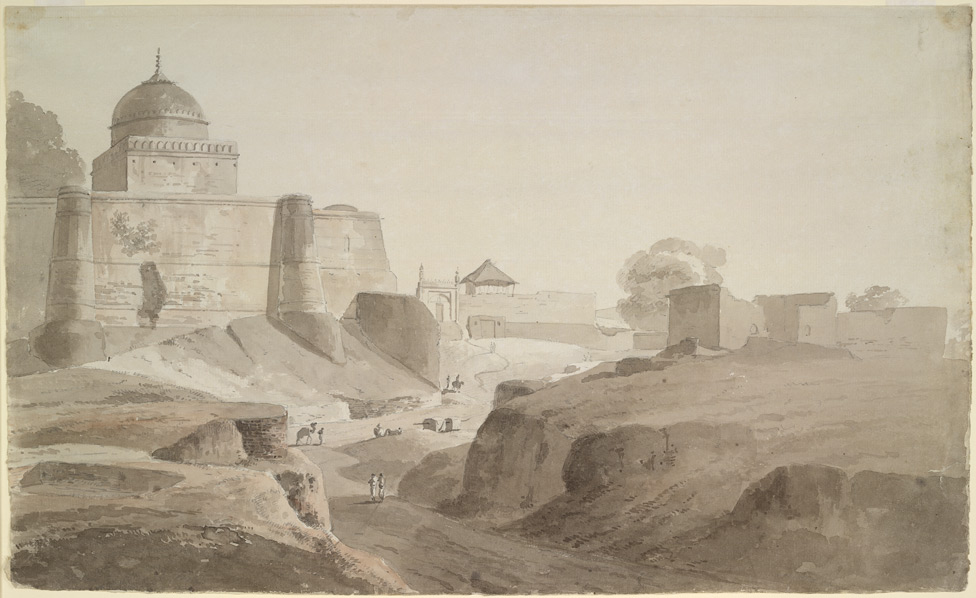Sambhal faces a fierce battle over its right to the Hindu heritage as a religious site. The ongoing legal dispute between the Jama Masjid Committee and Hindu petitioners is just the latest chapter in a centuries-old story of conquest, destruction, and reclamation of this temple town.
At the heart of this controversy lies only one question. Was the Shahi Jama Masjid built on the remnants of the ancient Harihar Mandir? The answer lies in the folds of historical accounts and archaeological evidence. The truth reveals a complex narrative that dates back thousands of years.
Ancient Origins of Sambhal and Its Forgotten Legacy

Sambhal is not just another city in Uttar Pradesh. It is a historical and religious landmark, referenced in Hindu scriptures and linked to the prophesied arrival of Lord Vishnu’s final avatar, Bhagwan Kalki.
According Senior historian Dr Ajay Anupam states, Matsya Purana presents that Emperor Yayati established Sambhal and its temple.
Smabhal’s Harihar Mandir is mentioned in texts like the Shrimad Bhagwat Purana and Skanda Purana.
Even the 1879 Archaeological Survey of India (ASI) report by Archibald Campbell Carlleyle confirms that Sambhal had different names across ages: Sambhaleshwar in Satya Yuga, Mahadgiri in Treta Yuga, and Pingala in Dwapar Yuga. This continuity of historical significance establishes the region’s deep connection to Hindu traditions.
Further, the report says that the present building is NOT a mosque at all. It has not been built by any Babur.
The present structure was built as a Hindu temple by king Prithviraj Chauhan. It has just been taken over and remodeled for Muslim worship. pic.twitter.com/JKi6crRNNF
— True Indology (@TrueIndology) November 27, 2024
During the Mauryan period, Sambhal – then known as Pingala – was part of the Panchal state and later integrated into Emperor Ashoka’s empire. It continued to thrive under the rule of the Chauhan Rajputs, particularly Emperor Prithviraj Chauhan, believed to have rebuilt the Harihar Mandir after earlier destruction.

The 1891 ASI report by A. Fuhrer and the 1911 Moradabad Gazetteer by H.R. Nevil also confirms that Prithviraj Chauhan reconstructed the temple. These references are crucial, as they demonstrate that a large and significant Hindu temple existed in Sambhal before the Islamic invasions.
Era of Islamic Destruction – The Fate of Sambhal’s Harihar Mandir

The destruction of Hindu temples in North India began with Mohammad Ghori’s invasion after the Second Battle of Tarain in 1192 CE. However, the first major assault on Sambhal came later. In 1254 CE, Sultan Balban launched a brutal campaign against the city to crush a Hindu rebellion. This event, recorded in the “Tarikh-i-Firozshahi” and Brijendra Mohan Sankhder’s “Sambhal: A Historical Survey,” describes how Balban’s forces nearly wiped out the Hindu population of the region. The Harihar Mandir was likely one of the casualties of this massacre.
By the 15th century, Sikandar Lodhi made Sambhal his capital for four years, further diminishing its Hindu legacy. It was during this time that major Islamic educational institutions were set up, indicating a demographic and cultural shift. But the most crucial moment in Sambhal’s history came during the Mughal invasion. The 1879 ASI report states that an inscription found at the Shahi Jama Masjid credits its construction to Amir Hindu Beg, a commander of Babur.

However, Carlleyle discovered that the inscription contained a significant error—Babur’s name was incorrectly written as “Shah Jamjah Muhammad Babur” instead of “Shah Zahiruddin Muhammad Babur”.
Local Muslim scholars later confirmed that this inscription was a forgery, likely created to justify the mosque’s presence on Hindu land. Despite this, after 1857 CE, control of the site was transferred to local Muslims, who used the forged inscription to win a civil court case against Hindus regarding the temple’s possession.
Architectural Clues: Shahi Jama Masjid was Once a Temple
Carlleyle’s report makes another damning revelation. It stated that the Shahi Jama Masjid was never an originally constructed mosque but rather a structure modified from an older building. He noted several architectural flaws that are inconsistent with traditional Islamic construction but align with Hindu temple designs:
- The mosque’s dome rests on an octagonal and square base. This is an uncommon feature in Islamic architecture but common in Hindu temples.
- The walls were originally built of red limestone. However, they were later covered with mismatched plaster, suggesting an attempt to modify an existing structure.
- The original temple stones were replaced with smaller bricks. But remnants of the original foundation remain.
- The original entrance had a single 8-foot-wide doorway facing east – a characteristic of Hindu temples. However, the Masjid features four newly cut doorways from the original stone frame.
The 1891 ASI report and the 1911 Moradabad Gazetteer reaffirm Carlleyle’s findings, conclusively debunking the narrative that the Shahi Jama Masjid was an original Mughal construction.
A Battle for Truth: Why Sambhal Matters Today?

Sambhal’s religious significance extends beyond just being the site of a lost temple. Hindu and Tibetan traditions both identify Shambhala (or Sambhal) as the prophesied birthplace of Lord Vishnu’s Kalki Avatar. Even Abul Fazl’s Ain-i-Akbari (1590 CE) mentions a temple called “Harimandal” in Sambhal. Thus, reinforcing the notion that a Hindu shrine existed well into the Mughal era. However, Samabhal’s significance was recognized far beyond India.
Ibn Batuta records that during the 14th century, a delegation from the Chinese Mongol Empire requested permission from Muhammad bin Tughlaq to rebuild a temple in Sambhal.
This request was denied. However, it confirms that by that time, the temple was already in a state of ruin. Destroyed by Islamic will or damaged due to lack of funds? No one knows. But, the existence of such a request from a foreign empire underscores Sambhal’s stature in the religious consciousness of the region.
The Rohilla Connection: Who Built the Shahi Jama Masjid?
If Babur did not construct the Shahi Jama Masjid, who did? The answer may lie in the Rohilla Pathan era of the 18th century. The Rohillas, originally from Kandahar, migrated to India under Aurangzeb and settled in Rohilkhand (modern western Uttar Pradesh).
Allegedly, they were instrumental in inviting Ahmad Shah Abdali, the Afghan warlord, to invade India in 1757 and again in 1761, leading to the infamous Third Battle of Panipat.
After the Rohilla Pathans took control of Sambhal, they established numerous Islamic centers, and it was during this period that the mosque was built atop the temple ruins. Queen Ahilyabai Holkar, who rebuilt the Kashi Vishwanath Temple in Varanasi, also constructed a new Kalki Temple in Sambhal in 1772 CE, just 300 meters from the Shahi Jama Masjid. This suggests that even by the 18th century, Hindu attempts to reclaim the land were ongoing.
Conclusion: The Fight for Historical Truth Continues
The current legal dispute over the Shahi Jama Masjid is not just about a piece of land! It is about acknowledging Bharat’s true history and the historical wounds of Hindus. The ASI reports from 1879, 1891, and 1911 clearly indicate that a Hindu temple stood in Sambhal long before the Masjid.
The forged inscriptions, architectural anomalies, and documented massacres point to a deliberate attempt to erase a sacred site.
The two Sambhal riots of 1978 and 2024 are just the latest example of the deep-seated resistance to uncovering the truth.
But history has a way of making itself known.
Sambhal is more than just a battleground! Like Ayodhya, it is a testament to Hindu resilience. Smabhla’s Harihar Mandir is a symbol of a civilization that refuses to forget its past. Hence, for all Hindus, Sambhal is a reminder that historical justice is long overdue.
References:
Sambhal dispute must be seen through its history – Article by Saurabh Ojha https://thesquirrels.in/governance/sambhal-dispute-must-be-seen-through-its-history-8550367
Article on Dr. Anupam on Sambhgal https://www.news18.com/india/sambhal-jama-masjid-was-once-harihar-temple-referenced-in-ancient-texts-historian-amid-row-9134566.html
Sambhal – A Historical Survey by Brijendra Mohan Sankhder https://ia801408.us.archive.org/30/items/in.ernet.dli.2015.119244/2015.119244.Sambhal–A-Historical-Survey.pdf
The Monumental Antiquities And Inscriptions, In The North-western Provinces And Oudh
by A. Fuhrer https://archive.org/details/in.ernet.dli.2015.34670
District Gazetteers Of The United Provinces Of Agra And Oudh Vol.xvi 1911 by H. R. Nevill https://archive.org/details/in.ernet.dli.2015.279959/page/n217/mode/2up?view=theater
Hastings and the Rohilla War by Sir John Strachey https://archive.org/details/hastingsrohillaw00strauoft/page/n5/mode/2up
Archaeological Survey of India Reports : v.1-11, 1862-1865; 1871-1878 https://archive.org/stream/archaeologicalsu01arch/archaeologicalsu01arch_djvu.txt


